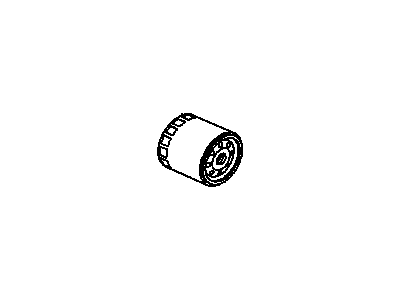My Garage
My Account
Cart
Genuine Chevrolet Metro Oil Filter
Engine Oil filter- Select Vehicle by Model
- Select Vehicle by VIN
Select Vehicle by Model
orMake
Model
Year
Select Vehicle by VIN
For the most accurate results, select vehicle by your VIN (Vehicle Identification Number).
1 Oil Filter found
Chevrolet Metro Filter,Oil
Part Number: 25011520$5.02 MSRP: $9.01You Save: $3.99 (45%)Ships in 1-3 Business Days
Chevrolet Metro Oil Filter Parts Questions & Experts Answers
- Q: How to perform frequent oil and Oil Filter changes for preventive maintenance?A: Preventive maintenance requires regular oil changes because over time, old engine oil becomes diluted and polluted leading to premature wear on the engine. A new oil filter is recommended every time you change your oil. Get together necessary tools (drain pan, rubber gloves, breaker bar, socket, and filter wrench), clean rags, newspapers for spills. Make sure that the car is adequately supported to allow access to both the oil drain plug and filter safely. Warm up the engine in order to facilitate easy flow of oil during draining. Lift the vehicle and position a drain pan under its drain plug. With a spanner, carefully extract the plug from its hole making it possible for the used up oil to escape. After this process wipe off with a rag, clean around it then fix it back well so that it doesn't become loose easily or fall off while you are walking away from your car or garage. Place a drain pan beside an old filter; remove an old one using a tool called "filter wrench", empty it out before putting everything back together again as they should be applied according to manufacturer's instructions on tightening requirements while lubricating new gasket with clean oil can be helpful after comparing old filters with new ones in terms of their compatibility in order that mount may be cleaned properly within minutes by those applying them right at home; lower down vehicle into pouring fresh oils inside via filler opening like many people do these days without taking any precautionary measures towards this thing which might end being messy if not careful enough about where precisely such substance was being placed into as earlier stated there is always some kind of funnel which must have been used just prior doing anything else whatsoever related here like starting engines up again while checking dipsticks afterwards plus this serves another purpose apart from ensuring no spillages happen once cap gets replaced following few seconds during running whereupon no further inspections shall need performed except throwing away contaminated fluids into appropriate disposal bins ultimately located outside premises used.










